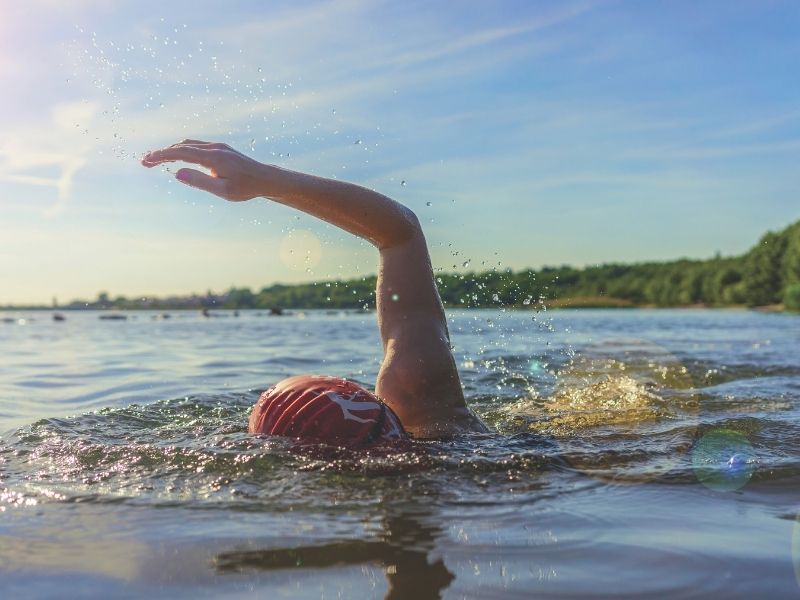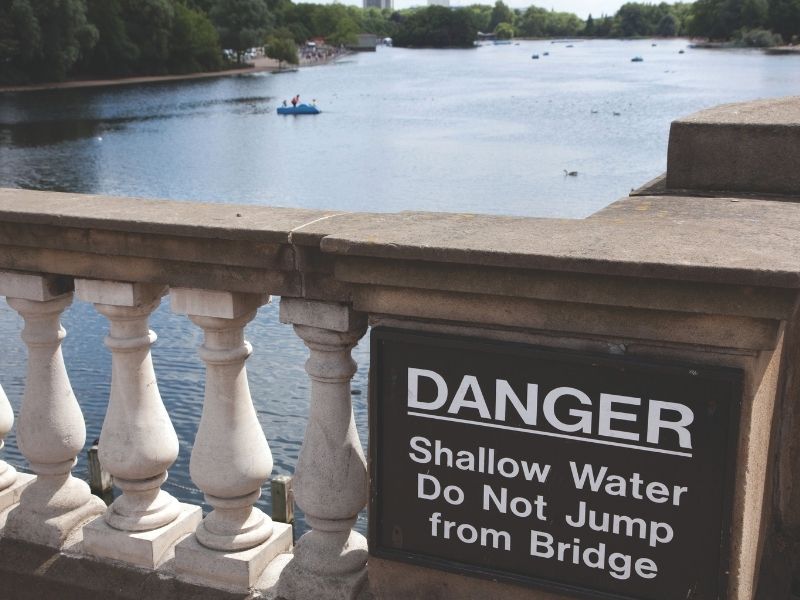Swimming pools
Take extra care - there could be things like wave machines that you’re not aware of, especially at leisure centres and holiday resorts.
- Follow safety signs and pool rules.
- Check out the water depths.
- Never dive into the shallow end.
- Don’t leave children unattended. See our water safety advice for parents.
- Keep trip hazards away from the edge of the pool.
- Don’t drink and swim. See our advice on alcohol and water safety.

Open water swimming
Swimming in open water can be a great way to exercise and enjoy the outdoors, but it's very different from swimming in a pool and can catch people by surprise. Accidental drownings often occur at places like rivers, lakes, canals, flooded quarries and reservoirs.
Swimming in a group or at an organised event is safer.
- Never swim alone.
- Swimming in unsupervised locations increases the risk – they may have hidden dangers.
- The water can be colder and deeper than you think or have strong currents and unpredictable river flows.
- Be aware of cold water shock.

Diving and tombstoning
Tombstoning might seem like fun but jumping or diving from a height such as a pier, bridge or cliff is very dangerous.
- Don’t jump into the unknown!
- Rocks or submerged objects may not be visible, but they can cause life changing injuries if you jump onto them.
- Water depths change with the tide – the water may be shallower than it looks.
- Cold water shock can make it difficult to swim.
- Conditions can change rapidly - strong currents can sweep people away making it impossible to get out of the water.